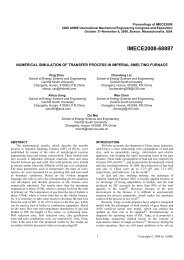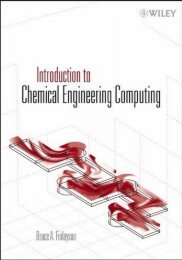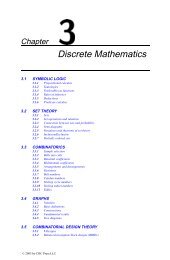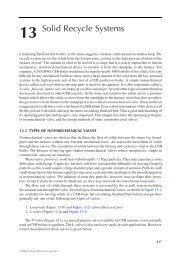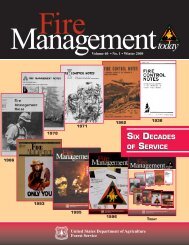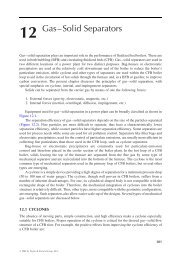Chapter 4: Geometry
Chapter 4: Geometry
Chapter 4: Geometry
Create successful ePaper yourself
Turn your PDF publications into a flip-book with our unique Google optimized e-Paper software.
FIGURE 4.37<br />
Top: a cone with vertex Ç and directrix . Bottom left: a right circular cone. Bottom right:<br />
A frustum of the latter.<br />
Ç<br />
<br />
È<br />
<br />
Ð<br />
Ö<br />
<br />
Ö ½<br />
Ö ¾<br />
Ð<br />
If is a simple closed curve, we also apply the word cone to the solid enclosed<br />
by the surface generated in this way (Figure 4.37, top). The volume contained between<br />
È and the vertex Ç is<br />
Î ½ (4.16.1)<br />
¿<br />
where is the area in the plane È enclosed by and is the distance from Ç and<br />
È (measured perpendicularly).<br />
The solid contained between È and a plane È ¼ parallel to È (on the same side<br />
of the vertex) is called a frustum. It’s volume is<br />
Î ½ ´ Ô<br />
¿ · ¼ · ¼ µ (4.16.2)<br />
where and ¼ are the areas enclosed by the sections of the cone by È and È ¼ (often<br />
called the bases of the frustum), and is the distance between È and È ¼ .<br />
The most important particular case of a cone is the right circular cone (often<br />
simply called a cone). If Ö is the radius of the base, is the altitude, and Ð is the<br />
length between the vertex and a point on the base circle (Figure 4.37, bottom left),<br />
the following relationships apply:<br />
Ô<br />
Ð Ö¾ · ¾ <br />
Lateral area ÖÐ Ö Ô Ö ¾ · ¾ <br />
Ô<br />
Total area Ö´Ð · Öµ Ö´Ö · Ö¾ · ¾ µ and<br />
Volume ½ ¿ Ö¾ <br />
The implicit equation of this surface can be written Ü ¾ · Ý ¾ Þ ¾ ; see also Section<br />
4.18.<br />
© 2003 by CRC Press LLC




